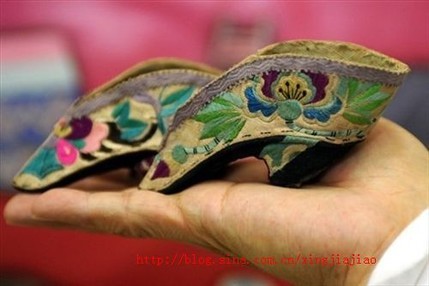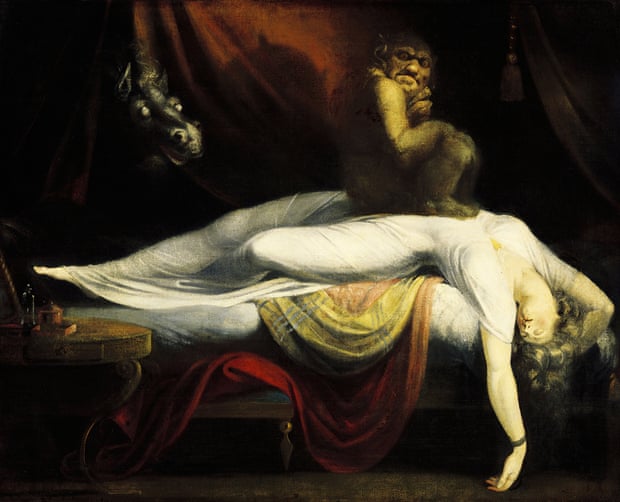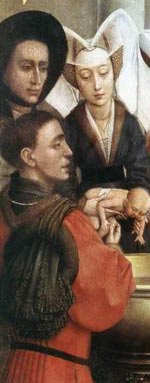Here's an interesting "Frog Prince" tale from Korea, this one does not tell the story from the perspective of the bride. We also get a back story for the frog, which you don't often see.
********************
A Frog for a Husband
Once there was an old farmer, Mr. Pak. He was poor but worked hard to fish and grow rice. He and his wife were childless and wondered what might happen to them in the future.

Gradually the farmer started to notice that there were less and less fish in his pond, and less water in the lake. Without fish or water, Pak and his wife would have no resources and could starve to death. The farmer went in search of the cause of his trouble and found a large bullfrog. In anger, Pak brought down curses upon the frog and his line of ancestors.
The frog did not seem to mind the curses, but instead asked to come home with the farmer. The Pak was hesitant, but the frog promised that the farmer would be glad someday. Pak thought his wife might be glad to have someone else to talk to.
He brought the strange guest home with him, and at first Mrs. Pak was horrified to board a frog. But she soon became glad of their guest, who told wonderful stories and was very pleasant company. "Indeed, she felt almost like adopting Froggie as her son."
The next morning, the couple woke to find the frog singing on their porch, and as he sang, the music was bringing them everything they could have wanted-valuables or jade, gold, and silver; clothes and hats, gowns and jewelry, furniture, and a polished metal mirror; food and delicacies and even a new house to put all these things in. The couple was never hungry and they enjoyed all their new blessings with their friend the frog, who continued to entertain them with stories, as Mrs. Pak told the frog about the village, especially the beauty and charm of the young Miss Peach.
Miss Peach was the most beautiful young woman, and her father was rich, but severe. When someone offended him, he would have his servants beat them until they were bloody and crippled. So it was to the farmer's horror that one day the frog declared he wanted the farmer to get him Miss Peach for a wife.
Pak tried to convince the frog not to send him on this mission, but the frog would not be satisfied until he had Miss Peach. So reluctantly, Pak went to the Poom mansion to ask for Miss Peach.
Mr. Pak told of all of the good qualities of Miss Peach's potential suitor, and Mr. Poom was impressed. He insisted on knowing the name of the suitor, to which Pak replied that he had forgotten the name, because he had "so long thought of the suitor's grace and accomplishments." Poom named every great Korean family name, and was suspicious that the suitor did not belong to any of these families. Eventally Pak had to admit that the suitor had no family name, for he was a frog.
Poom was furious and ordered his servants to bring out the whipping bench. The servants were just about to deal the first blow when the sky darkened, lightening and thunder flashed, and floods and hail the size of eggs began to pour. Poom ordered his men to hold off, and immediately the foul weather ceased and the sun shone.
Poom was impressed at this, and agreed to give the frog to his daughter, but did not tell her the strange news about her suitor. She was made ready for the wedding, and "according to custom, her eyes were sealed shut and covered with wax, for a Korean bride sees nothing of her husband until the end of the feast, when she meets him in the bridal chamber."
When the new bride finally laid eyes on her new husband, she was furious. The frog handed her a pair of scissors, and asked her to rip open the skin of his back from shoulder to thigh. "In bitter disappointment at being married to a frog, she seized the scissors and almost viciously began to cut from nape to waist." Yet underneath she saw silk, and out of the frog skin came a handsome prince, "the ideal of her dreams."
The next day the former frog told his foster parents his story. He had been the son of the King of the Stars and was cast out for some offense, forced to live on earth as a frog, until he accomplished three tasks: to drink up all the water in the lake, eat all the fish, and win the most beautiful woman in the world for a bride. Having done these things, he took his bride in a chariot back to his kingdom in the stars. "From this time forth a new double star was seen in the sky."
***************
Illustrations by Charles Robinson
Full text available in
Surlalune's Frog Prince and Other Frog Tales From Around the World, summary by me.
I seem to like folklore variants of the Frog Prince much better than the Grimms' story. It always bothered me that the daughter was so whiny about the frog, yet rewarded. Yet on the other hand, who can blame her? No one wants a slimy pet eating off your plate or sleeping in your bed. But I didn't like that contrast between herself and the King, Mr. "Always Keep Your Promises" (easy for him to say, he didn't have to bring the frog into his bed).
I like that in this story,
everyone is initially repulsed by the frog, yet they change their minds, and he gives them whatever they most desire. He promises the farmer to make up for what he lost, and gives him much more; he provided companionship and conversation to the farmer's wife and ultimately became like the son they never had; he impressed Poom with his power, and gave Miss Peach the ideal husband and a heavenly palace. It's not only a reminder not to judge by appearances, but that idea that sometimes the worst things in life are making way for better things to come.
















